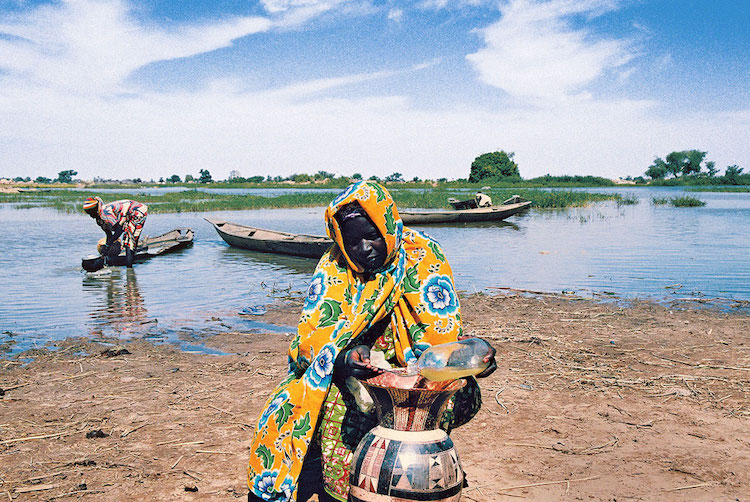By IDN-INPS Africa Bureau
NAIROBI (IDN) – A landmark meting of the UN Convention to Combat Desertification (UNCCD) has decided to ramp up global efforts to curb desertification and drought that are projected to force 135 million to migrate in the next 30 years.
The fifteenth session of the Committee of the Review of Implementation of the UN Convention to Combat Desertification (CRIC 15) concluded its three-day meeting on October 20 in Nairobi, Kenya, with the adoption of an outcome aimed at intensifying efforts to combat desertification.
The Committee was established as a subsidiary body to the Conference of the Parties (COP). Land Degradation Neutrality (LDN) will constitute a part within the CRIC15 Strategic Framework, under the Convention from 2018-2030. It is scheduled to be adopted by the Conference of the Parties to the UNCCD next year.
The impacts of land degradation affect the sustainability of the entire world, so a global effort is needed to tackle it, including through the UN 2030 Agenda for Sustainable Development, said Monique Barbut, the Executive Secretary of the Convention and stressed: “Ignoring land degradation neutrality (LDN) could be political suicide.”
Moreover, she stressed that LDN remains a Sustainable Development Goals (SDGs) target – under Goal 15 – and populations will experience real benefits in terms of climate change, rural employment and food security.
Two issues were deemed particularly important for CRIC 15. First, the elaboration of a strong strategy for implementation from 2018-2030. The current strategy expires in 2018. Parties agreed that the 2008-2018 strategic objectives are still relevant and should be retained.
But they differed on the reporting procedures and the weight that should be given to Sustainable Development Goal (SDG) target 15.3, on land degradation neutrality. These changes would also affect the mandate of the CRIC itself.
Land degradation neutrality refers to the condition where a country maintains or enhances the health and productivity of its land resources. Through SDG target 15.3, all countries committed to strive to become land degradation neutral by 2030.
The CRIC 15 outcome document on the proposed strategy provides the Intergovernmental Working Group (IWG) with a clear idea of the issues that must be resolved before the Conference of the Parties meets in 2017, and the weaknesses of that need to be corrected.
The IWG is a small group of regional representatives that was chosen in 2016 by the countries to draft the strategy, and was continuing discussions in Nairobi for a further two days, to revise the text based on the CRIC 15 outcomes.
The second important issue CRIC 15 dealt with is an ongoing exercise where countries are setting their voluntary national targets on land degradation neutrality. At the start of CRIC 15, more than 100 countries had committed to set a national target, exceeding the ambition for at least 60 countries to do so within the first year of the adoption of the SDGs.
Some parties have expressed concern that the focus on land degradation neutrality could turn the limelight away from other issues mandated under the Convention, such as drought, drylands populations or building the capacity of developing countries to combat desertification and drought.
Barbut reassured delegates that would not be the case. “We are making progress on drought. The Africa Drought Conference hosted by Namibia in August 2016 was, I believe, a turning point. We will present you with options for a decision at COP next year. As requested by Parties, I am also driving forward a new agenda to enhance capacity for implementation at country level,” she said.
CRIC 15 delegates commended the commitment by countries to set voluntary national targets on land degradation neutrality and requested for UNCCD support to monitor, evaluate and report on these efforts. They also requested the UNCCD’s guidance on the methodologies to be used in the exercise, and to mobilize the participation of other relevant stakeholders, such as the private sector.
CRIC 15 also looked into the issues of the financing of the activities mandated under the Convention, gathering and sharing of information and the lessons learned, and the mandate of the CRIC.
Regarding the outcomes of CRIC 15, Barbut said: “We will have a bold exciting COP (Conference of the Parties) where the adoption of a revised strategy will be complemented with decisions on drought, sand and dust storms and capacity building – among others.” [IDN-InDepthNews – 22 October 2016]
Photo: In the Liptako-Gourma region, Niger, an area that has experienced large-scale land degradation and water scarcity, a villager takes extra precautions to keep her supply of water clean. Credit: UNDP/Rabo Yahaya


